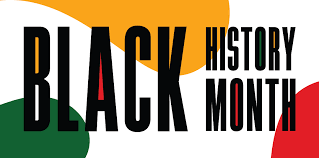Black History Month: A struggling rollercoaster

February 10, 2021
Black History Month was first celebrated in February of 1970. While many African-Americans and people of color unquestionably deserve the same life and equality as others, they’ve had to fight, and continue to do so, to make progress towards that goal. From the time of slavery to the Jim Crow laws, all the way to the United States Presidency, people of color have made much progress, but there is still work to be done.
Slavery had been rampant in the United States of America since the birth of the nation. That was, until one of the greatest anti-slavery figures emerged, President Abraham Lincoln. Lincoln, as many know, was the President of the US and leader for the Union during the Civil War, and not only kept America as one but also famously wrote the Emancipation Proclamation, which gave way to freedom for African-Americans.
This eventually led way to the 13th, 14th, and 15th amendments, which culminated in the abolishment of slavery, the establishment of equal legal protection and the reversal of the infamous Dred Scott decision, and the universal rights in elections. And while these accomplishments were accomplished, former Confederate states still found ways to burden the freedom of the recently freed, with the usage of Jim Crow laws, poll taxes, and other discriminatory practices.
Throughout the next hundred years, more pushes for equality occurred: until 1954. In this year, racial tensions gave way to one of the most prominent movements of the 20th century: the Civil Rights movement. The Civil Rights movement changed the stance on racial discrimination and unveiled some true heroes of the time. One of these heroes was Rosa Parks, who made history by refusing to give up her seat on a bus in Montgomery, Alabama, in 1955. Rosa’s courage and determination lit the path for numerous more civil rights leaders and activists, and hence has been crowned “the first lady of civil rights” and “the mother of the freedom movement”. And one of those leaders was Dr. Martin Luther King, Jr.
As a boy, Dr. King, like countless others, suffered from the discriminatory views from white people, and couldn’t even play with his white friend after school. Raised by his father, a pastor, and inspiration to King, Martin followed in his father’s footsteps and became a pastor at Ebenezer Baptist Church. There, King began to lead the millions of activists on marches, boycotts and gave many encouraging, inspiring speeches. Although Dr. King was a hugely influential person on the matter of civil rights, hatred and division still ran their marathon throughout the country, and Dr. King was assassinated.
This setback did, arguably, more help than harm for the cause, as more and more Americans, including politicians, began to feel motivated to change life in America for African-Americans. That fateful April day in 1968, paved the path closer to true freedom. Closer, as to the shooting of John Lennon’s vision of a world where there’s “nothing to kill or die for”, and the discovery and rebirth of the Titanic. Closer as to recalling the Jim Crow laws, and closer to the point of our first black President’s inauguration, Barack Obama.
President Obama was elected, by the citizens of America, to the highest office of our land: the Office of the President of the United States. It seems as though the courage and leadership and sacrifices that those who had come before him, finally, paid off. Finally, all people were not “judged by the color of their skin, but by the content of their character.”
Since 2008, more persistence to “perfect a more perfect union” has occurred, such as the recent Black Lives Matter movement, just over 40 years since the end of the Civil Rights movement. And, another glass ceiling of discrimination was broken: women’s rights. On January 20th, 2021, Kamala D. Harris was officially inaugurated as Vice President of the United States. Not only was a woman elected to the second-highest office, but a Pacific woman. An Indian woman. A black woman.
Although this battle for righteous equality and freedom was a struggle for some, breakthroughs were made. Over 50 years have passed since the ending of the Civil Rights Movement. The bravery of some to stand up for what was right, no matter how big or how small, made an impact as big as California’s Sequoia trees, patient with time and determined to grow.
However, progress is still needed. And in the spirit of those patriots that came before us, as well as Black History Month, that progress is our responsibility. How can everyone fight for equality for blacks, whites, women, Latiños, Asians, Indian, gay, straight, transgender, tall, short, fat, thin, disabled, and for those longing to be free? Truly free.
Can we carry out Dr. King’s dream? Can we carry on the bravery of Rosa Parks? Can we be bold like Abraham Lincoln? Can we be persistent like President Obama and Vice President Harris? We can not stop until there is “an invigorating autumn of freedom and equality” in this country. We cannot stop until we can hear “freedom ringing” and are “able to sing with new meaning: “My country, ‘tis of thee, sweet land of liberty, of thee I sing. Land where my father’s died, land of the pilgrim’s pride, from every mountainside, let freedom ring.”

